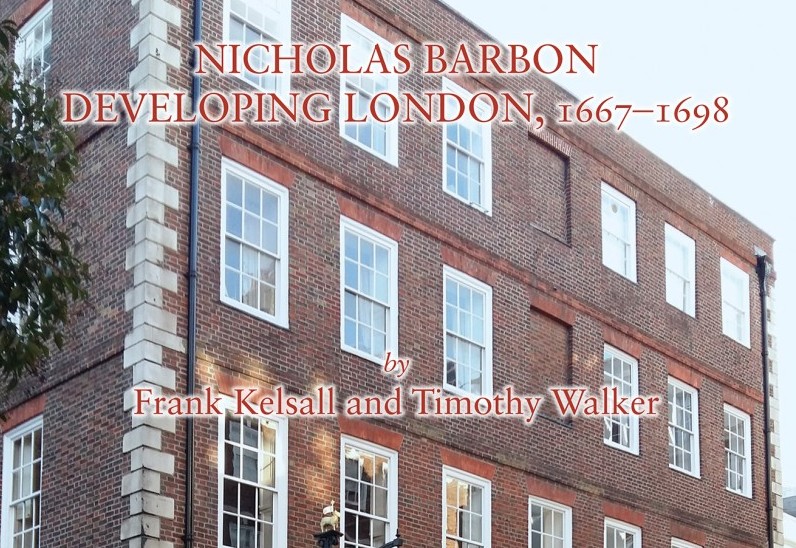Post
BOOK REVIEW | Nicholas Barbon: Developing London
1 Feb 2023
Nicholas Barbon: Developing London 1667-1698
Frank Kelsall and Timothy Walker (published by the London Topographical Society)
Reviewed by John Radford
Dorothy Parker, as reviewer ‘Constant Reader’ in the New Yorker, once remarked of an item: ‘This is not a book to be tossed lightly aside. It should be hurled with great force’. Fortunately, that could not be said here, as either would require a shot-putter of near Olympic standard. This splendid tome weighs 3.5 pounds, and costs £35, or £27 for members of the Society that publishes it; considerably better value, in my opinion, than many at two or three times those prices.
Anyone, even an amateur like myself, who delves into the history of numerous built-up locations in or close to the City of London will very soon come across the name of Dr Nicholas Barbon. You get the impression that he had a finger in every 17th century development pie. Yet this is, apparently, the first full account of his life and work. But better late than never: the present authors have certainly done him proud.
One reason for the lack of an earlier biography may be that relatively little is known about Barbon’s personal life. However: he was born in London in 1638 or 1640, the son of a wealthy merchant with strong religious (Puritan) and political views which he expressed forcibly in speeches, sermons and writing, on occasion causing disturbances. Nicholas studied at Magdalen Hall Oxford from 1656 to 1659, probably classics and history, followed by medicine at Leyden and then Utrecht. Back in London he began to practise medicine, and was one of the few who remained to treat patients in the plague of 1665.
The next year of course saw much of the City destroyed in the Great Fire. This disaster, along with an increase in the population and wealth of London, led to a boom in building and property development, which became Barbon’s main occupation. He proved adept at persuading others to invest in projects, most of them successful, at juggling complex financial arrangements, and at circumventing or ignoring obstacles such as regulations or court actions, at times unscrupulously or even illegally. He also introduced innovative techniques in financing developments, for example through mortgages, and was among the first to offer fire insurance for houses. Overall, he contributed significantly to the conversion of London from a mediaeval to a modern city, in particular the typical terraced form of housing. Barbon was also an active writer on economic theory, particularly advocating free trade and the benefits of expansion and increased consumption. Barbon died in 1698.
All this is recounted in detail by Kelsall and Walker, based on extensive research – Barbon’s multiple activities have left a mass of unpublished documentation – and lavishly illustrated, including many of his still remaining buildings. It is particularly fascinating to see what Barbon did with locations one knows well. It is difficult to imagine that this book will be superseded in the foreseeable future, rather it will surely remain the standard work of reference on Barbon, and an invaluable resource on the history of our capital city.
